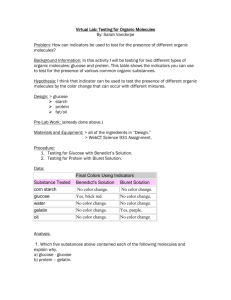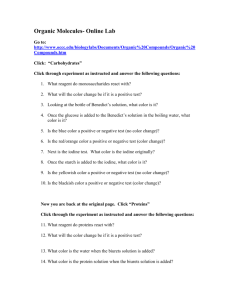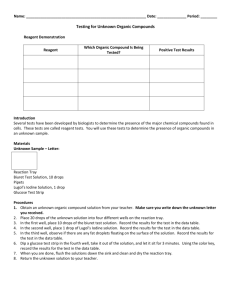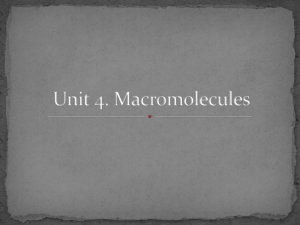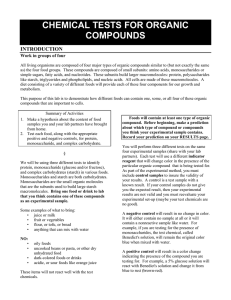NAME: :_____DATE: : HOW DO WE DETERMINE THE NUTRIENTS
advertisement
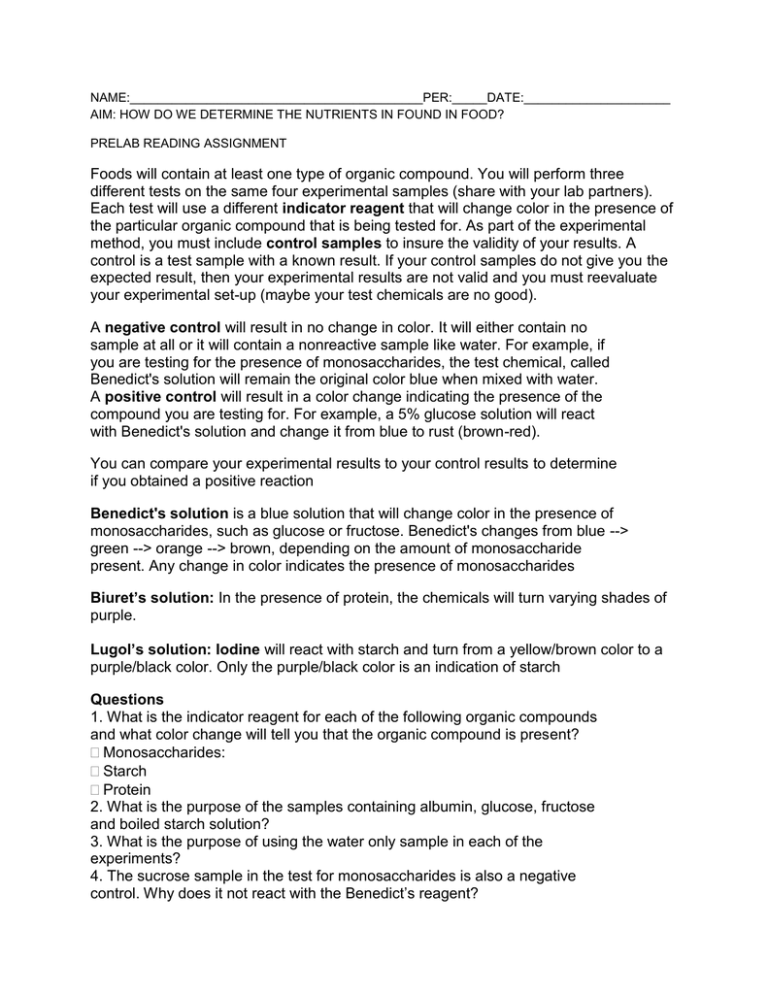
NAME:__________________________________________PER:_____DATE:_____________________ AIM: HOW DO WE DETERMINE THE NUTRIENTS IN FOUND IN FOOD? PRELAB READING ASSIGNMENT Foods will contain at least one type of organic compound. You will perform three different tests on the same four experimental samples (share with your lab partners). Each test will use a different indicator reagent that will change color in the presence of the particular organic compound that is being tested for. As part of the experimental method, you must include control samples to insure the validity of your results. A control is a test sample with a known result. If your control samples do not give you the expected result, then your experimental results are not valid and you must reevaluate your experimental set-up (maybe your test chemicals are no good). A negative control will result in no change in color. It will either contain no sample at all or it will contain a nonreactive sample like water. For example, if you are testing for the presence of monosaccharides, the test chemical, called Benedict's solution will remain the original color blue when mixed with water. A positive control will result in a color change indicating the presence of the compound you are testing for. For example, a 5% glucose solution will react with Benedict's solution and change it from blue to rust (brown-red). You can compare your experimental results to your control results to determine if you obtained a positive reaction Benedict's solution is a blue solution that will change color in the presence of monosaccharides, such as glucose or fructose. Benedict's changes from blue --> green --> orange --> brown, depending on the amount of monosaccharide present. Any change in color indicates the presence of monosaccharides Biuret’s solution: In the presence of protein, the chemicals will turn varying shades of purple. Lugol’s solution: Iodine will react with starch and turn from a yellow/brown color to a purple/black color. Only the purple/black color is an indication of starch Questions 1. What is the indicator reagent for each of the following organic compounds and what color change will tell you that the organic compound is present? Monosaccharides: Starch Protein 2. What is the purpose of the samples containing albumin, glucose, fructose and boiled starch solution? 3. What is the purpose of using the water only sample in each of the experiments? 4. The sucrose sample in the test for monosaccharides is also a negative control. Why does it not react with the Benedict’s reagent?


